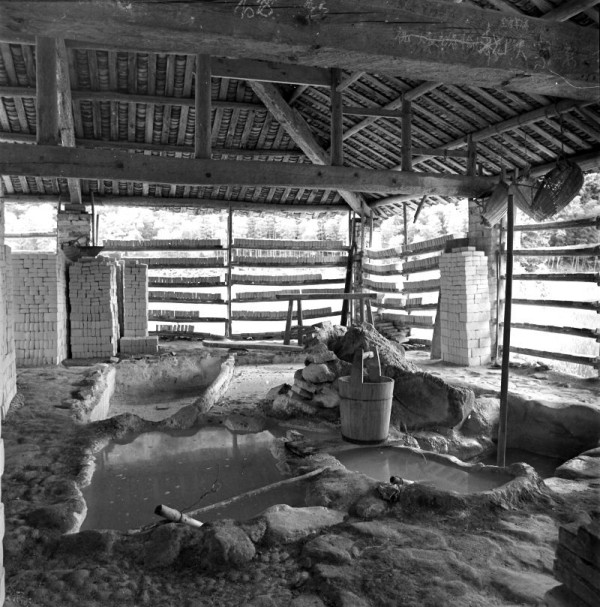
"At Raonan, north of Gaoling (Kaolin) and just north of Yaoli in the Jingdezhen area, was this little beautiful water powered rock crushing facility in full use. Since the stream was now a mere trickle, several of the pounding hammers were disengaged. Here porcelain clay was manufactured in the traditional way. One of these white "Baiduntzi" (petuntse) bricks was brought back home."
Photo © Jan-Erik Nilsson, Jingdezhen, September 9, 1992.
Better known under the name petuntse. Petuntse or Baidunzi, pinyin: bai dun zi, also spelled bai dunzi, is a historic term for a wide range of micaceous or feldspathic rocks that after geological decomposition processes resulted in a material which, after crushing and being turned into a paste, were suitable as an ingredient in making Chinese porcelain.
The name means "little white bricks", referring to the form in which it was transported to the potteries and was earlier believed to be the sole ingredient of Chinese porcelain. Later thought to mean the china stone, which mixed with kaolin, produces porcelain paste. Actually these clay bricks are the transportation shapes of any clay and pastes needed in porcelain production.
It was, and to some extent continues to be, an important raw material for Chinese porcelain, although the terms "porcelain stone" or "pottery stone", are now used. The equivalent term in Chinese is cishi.
During the later dynasties, from Yuan and later, it was mixed with kaolin in proportions varying according to the shape and grade of porcelain to be produced. Wider shapes such as the large dishes made during Yuan and Early Ming for the Middle eastern market needed a larger proportion of Kaolin to avoid sagging during firing for example. Everyday porcelain (minyao) where shape was not so much of an issue, porcelain stone could be used as it was or with very little kaolin added.
There are large deposits of high quality stone in Jiangxi province in south-eastern China, especially in Jingdezhen, which became the most important center for porcelain production in China and the location of the Imperial porcelain factory.
While sharing some similarities to the material known as China stone, which is found uniquely in southwestern England, they differ in mineralogy. However both are derived from the alteration of igneous rocks.
For more information on Chinese porcelain material see: A visit to Jingdezhen with Bo Gyllensvärd, in 1992
A